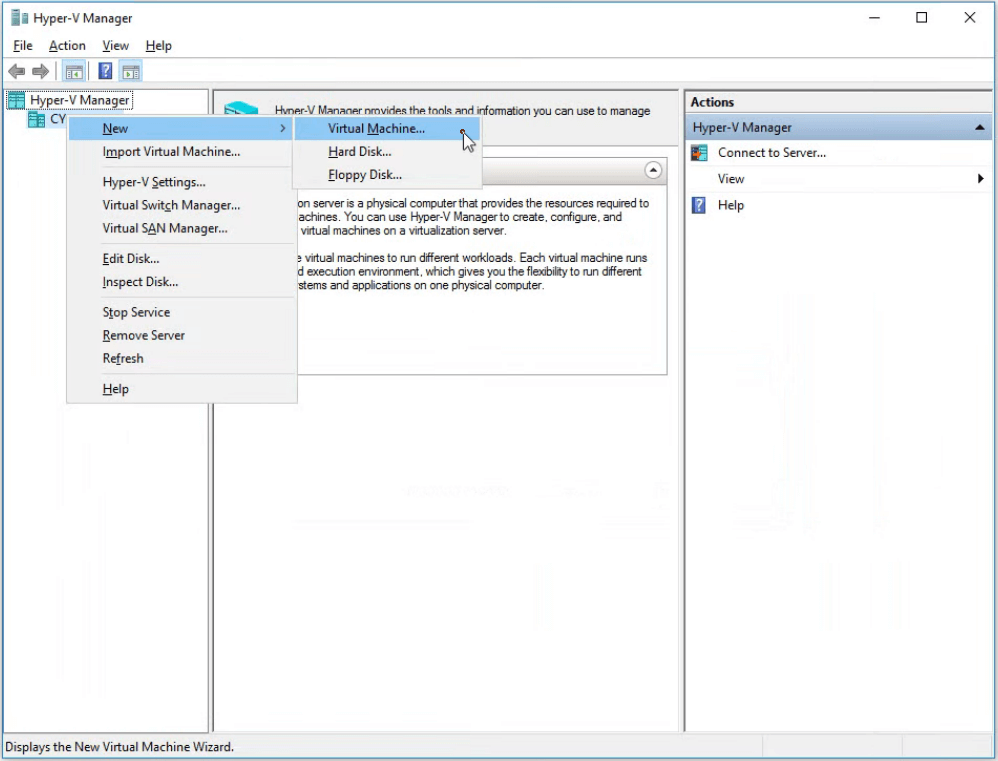Remote Access To Hyper-v Manager
In this post, my goal is to provide the steps one must take in a typical non-domain environment to set up Hyper-V Server 2016 and remotely manage it via Hyper-V Manager from a Windows 10 PC. I will split this post into three sections; what to do on the Hyper-V Server host, the Windows 10 PC, and some troubleshooting steps. Manage Hyper-V in a workgroup remotely. Client with Hyper-V Manager (Windows 10). This client is called win10-01 Server with Windows Server 2016 core version with the Hyper-V role enabled. The server is called hv-02 Both systems are in the same workgroup called “workgroup” Both systems have the same username and password. Configuration on.

Only the Windows 10 machine with Hyper-V Management Tools installed will be able to connect and manage the 2016 Hyper-V Server.Also because it is stand alone you will need to add your Windows 10 workstation login creds to the local administrators group on the Hyper-V 2016 box. Firewall and remote management also need to be turned on so RDP into the 2016 Hyper-V server and use SCConfig from the command line to open up Firewall and Remote WinRM on the Hyper-V box, try connecting from the Windows 10 box after all that configuration and report back your findings. Only the Windows 10 machine with Hyper-V Management Tools installed will be able to connect and manage the 2016 Hyper-V Server.Also because it is stand alone you will need to add your Windows 10 workstation login creds to the local administrators group on the Hyper-V 2016 box. Firewall and remote management also need to be turned on so RDP into the 2016 Hyper-V server and use SCConfig from the command line to open up Firewall and Remote WinRM on the Hyper-V box, try connecting from the Windows 10 box after all that configuration and report back your findings.
To be completely sure we're on the same page: you installed Hyper-V server 2016 and joined it to the domain.You are now trying to initialize a data disk (hence the need for computer or disk management), am I correct?If that is the case, either ensure that the firewall on both ends is configured to allow Remote Volume Management, or as an easier solution, just use powershell:If you have the latest RSAT for hyper-V installed on your WIN 10 box You should be able to connect to the Hyper-V manager and create VMs there. Been through this in a similar problem, only mine went a step further.For sure there are workarounds to get things going if your Hypervisor is not on the same domain as your Windows 10 PC or if on the same subnet. I've got more than 20 clients that need to be managed and cannot manage Hyper-V through VPN tunnels. I cannot ask my customers to dedicate a Windows 10 PC on their network simply to manage their hypervisor.5Nine they say. Yeah., extremely pricey!


(Used to be a free version, but once they got you addicted to the sugar., now it's time to pay)Good luck if you need to manage Hyper-V through VPN tunnels. ( I blame Microsoft for making this so difficult. Mostly the hyper-v management part)If you have success, I'd be grateful for answers. For now., Hyper-V as a role on Windows server 2016 (no choice)But, TBH., ESXi from now on! Here is what I did when I built my Windows Server 2016 Core. Should work for Standard/Hyper-V but may need modified. (Should have posted this first, since I did miss a step you needed to do).
Remote Access To Hyper-v Manager Windows 7
Step 4 is missing (the rest didn't get renumbered like I expected). That was pushing out the NetXMS management agent.1.SCONFIGa.Set Computer Nameb.Joined Domainc.Set Network settingsd.Downloaded updatese.Enable Remote Managementf.Enable RDPg.Enable Pingh.Telemetry Settings = security2.
Design and dress up your very own Virtual Anime Girl! Download game virtual girlfriend android terbaik. Design and dress up your very own Virtual Anime Girl!